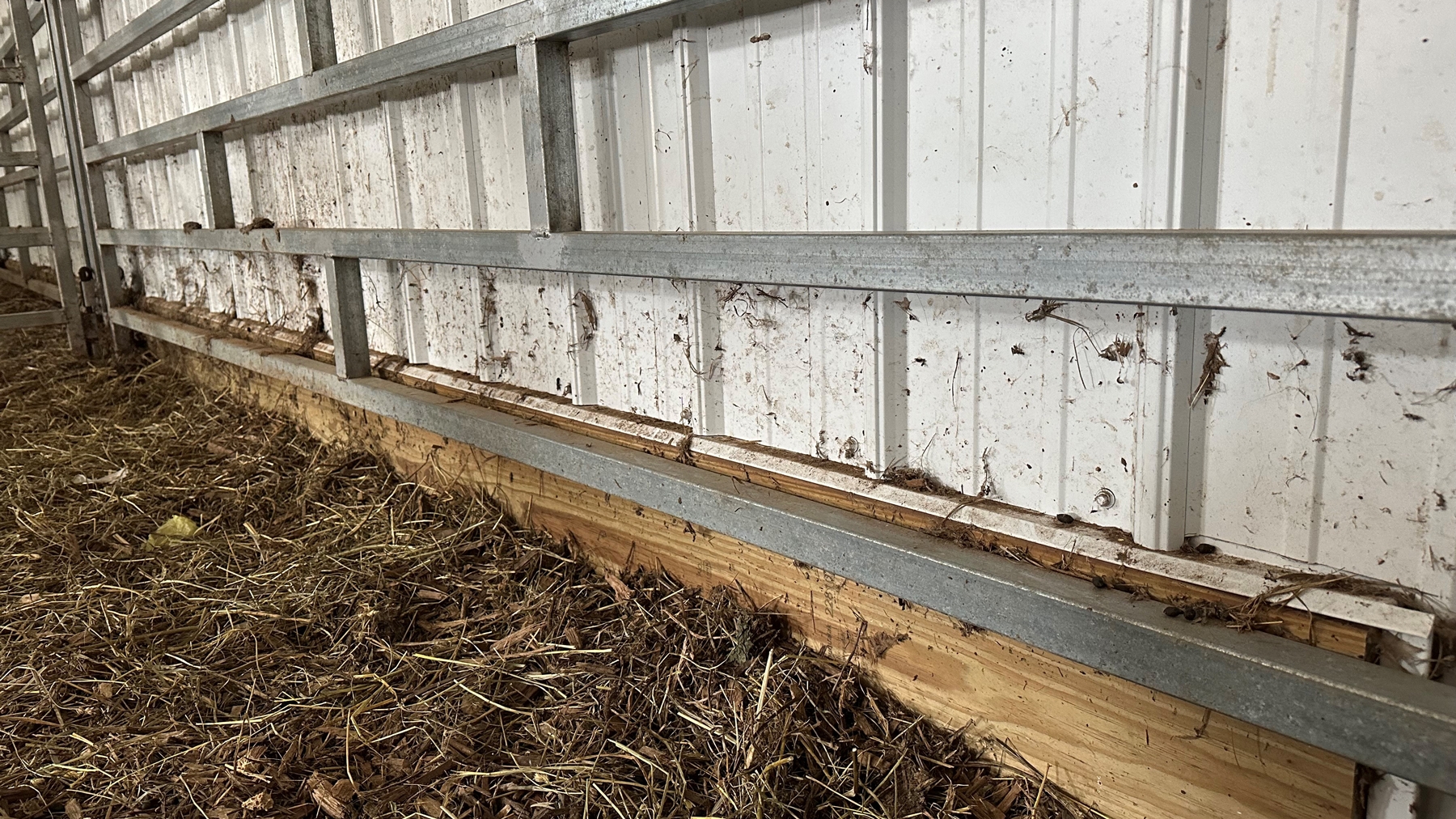Nobody’s ever accused my husband, John, and me of making a snap decision. We like to think things through, mull over the possibilities. I may have once taken so long to decide on wallpaper that the company discontinued it by the time I decided. Whatever. It had morningglories on it, and we all know that would’ve been a mistake.
So when we started plotting out a new shed for our farm in late 2018, we knew it was going to take some time.
We calve all the first-calf heifers at our place, and after spending a few too many nights in the barn trying to keep calves alive in subzero weather, we decided we were getting too old for that kind of fun and wanted a heated place to take both cow and calf. We also needed a better spot to wash show cattle and an insulated building for general storage. So, we had some ideas.
But back to that timeline. We’d spent time checking out other sheds and barns (a LOT of time — and the Facebook group Farm Shop Ideas is also helpful). But things happen, like the possibility of not planting in 2019. So we held off. After a decent crop came in, we felt better about a construction project. We poured concrete in the fall, and the building went up in early 2020. And just as we were ready to put up car siding inside, the pandemic hit. Suddenly, we had three teenagers with time on their hands. And eventually, paint.
Built by Wagenbach Builders, our farm shed is a 40-by-84-foot insulated building, with 36 feet on the cattle end, including two 12-foot pens, and 48 feet on the other end for storage.
Overall, there’s a lot we like about it and very little we don’t. We wish we’d put exhaust fans on the cattle side. Warm bovine bodies make it damp in there, but we usually crack the windows or doors and manage it that way. Ceiling fans help some.
The list of things we like is a lot longer:
1. Heat and air conditioning. When we built, we could get heat with a furnace plus air for the same price as in-floor heat. John says he wouldn’t argue with anyone who loves their in-floor heat, but for his money, he really enjoys the air conditioning. Plus, he’s not working in it every day like you would in a traditional farm shop. We host a lot of family events and more in this shed, and more than once, we’ve been grateful for the cool air.
2. No in-ground posts. All the posts sit on top of the concrete slab, which means no wood posts are in the ground.
3. Concrete insulation. John put sheets of insulation down along the outside of the footings before he poured them. He says the concrete doesn’t get as cold as some we have in other places, and that makes a world of difference for heating.
4. Good drains. We put in U-drains, which cost more but have paid off on the cattle side — for all the reasons you might imagine at the back end of a wash rack.
5. More insulation. The builders put house wrap on before the tin; then we sprayed foam next to the wrap. The whole place is tight, and following the third winter, we have yet to empty a thousand-gallon propane tank.
6. Family builders. After getting several bids, we decided on Wagenbach Builders, based out of Pekin, Ill. We liked being able to pick up the phone and talk to the guy with his name on the end of the building, and to see him and his family on-site. Plus, they were great to work with, like giving John time to run electricity as they built so he didn’t have to run conduit on the outside.
7. Perforated tin. Whoever came up with this noise-absorbing tin is genius. We put it on the storage side but not the cattle side, and you can clap on either side and hear the difference immediately.
8. Inside walls. We used car siding on the lower 8 feet of the walls inside the storage area. Our kids spent the early weeks of the pandemic priming and painting, which was incredibly convenient for their parents.
9. Cattle protection. Back on the cattle side, John installed a 2-by-12-foot board at the base of the wall where the pens are located; otherwise, the tin at the bottom gets torn up and rusted. The tin sits above that. Eventually those boards will rot and we’ll replace them. The pens have lime under them instead of concrete.

10. Porch. I really wanted a porch, and I don’t have a good reason for, it but it sure makes me happy. We’ve sat out there on warm summer nights, we’ve had a bunch of parties and cookouts where we all hung out on the porch, and I remember one COVID cookout where we just sat and watched the kids play. We’ve hosted a Homecoming dance, an eighth grade party, a few harvest dinners and a couple of Easters. The porch got a workout every time. Plus, it looks good, breaking up the span of the long side of the building.
11. Handmade bench. It’s definitely not a necessity but it’s definitely special: Our son, Nathan, built a workbench (see below) in his ag woodworking class last year. It weighs a ton, and we’ll love it forever. He’s also used the shed as a workshop for his custom cornhole board business — something we didn’t see coming back in 2018, either.
